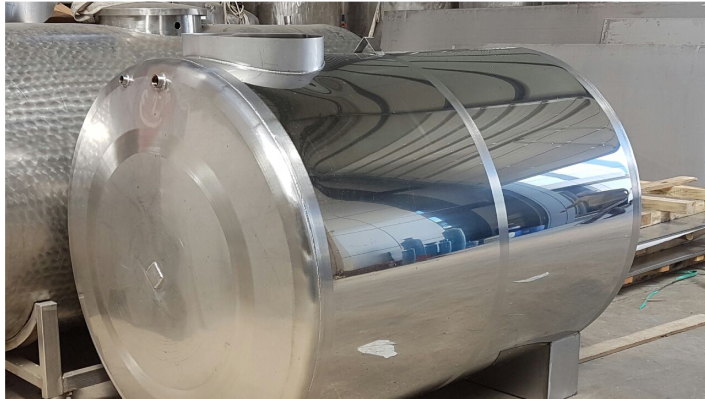Tanks nowadays come in a wide variety, offering numerous advantages to their users. We can observe the extensive use of tanks in various places around us. These tanks are carefully manufactured using raw materials that ensure the safety of the stored content. The primary materials employed for water tank production, as determined through meticulous research and development (R&D) studies, are polyethylene, polyester, and stainless steel. Among these materials, stainless steel stands out as a remarkable choice.
Stainless steel is an exceptionally robust and sturdy raw material. Its resistance to external impacts makes it highly challenging to puncture or damage a tank made from stainless steel. However, it may be slightly heavier compared to other materials. A stainless steel tank is crafted by blending chrome and steel to form the required materials, which are then joined together using argon gas welding, in accordance with the tank design. As the tank volume increases, its dimensions expand proportionally. This growth can occasionally make it difficult to access the tank's cover part. To address this, ladder supports are added to larger volume water tanks.

One of the most valuable features of stainless steel tanks is their working heat rate. They are exceptionally well-suited for storing hot contents due to their working heat rate of +80 degrees Celsius. As this rate is close to the boiling point, it is advisable to avoid touching the outside of the water tank when placing hot contents inside. Thanks to these attributes, stainless steel tanks belong to the most robust tank category.
Properties of Polyethylene and Polyester Tanks
Extensive research and development were conducted before producing all types of tanks. As a result of these studies, it was recognized that producing tanks in different colors fulfills a consumer need. Consequently, these tanks can be manufactured in any desired color, catering to the desire for categorizing different stored contents.
Moreover, all storage products come with a two-year guarantee, covering manufacturing defects only. Additionally, any storage product you have used can be repaired. During the repair process, the same raw material from which the tank was originally manufactured is used, aiming to preserve the design integrity as much as possible.
Polyester Water Tank Features
Polyester tanks are crafted from materials derived from glass fiber and polyester resin. Special adhesives are used to combine the obtained materials, aligning with the tank's design. These tanks are particularly renowned for their chemical resistance, as they are produced with isophthalic and epoxy-based vinyl ester resin to enhance this quality. Here are some other features of polyester tanks:
• High chemical resistance
• On-site assembly capability
• Production of large tonnage tanks with this raw material
• Capacity ranging from 200 liters to 100,000 liters.
• Availability in various colors upon request
• Customizable for special project designs
• Effective prevention of harmful rays from entering the tank
• Minimal moss formation
• Highest operating temperature of +60 degrees Celsius
• Ease of transport
• No rivets or joints

Polyethylene Water Tank Features
Water tanks made from polyethylene stand out with their affordable prices. They differ from stainless tank models primarily in terms of their lighter weight and production method. Polyethylene tanks are produced in a monoblock manner, meaning they are manufactured as one-piece units. The tanks are created by pouring polyethylene into molds. Additional features of polyethylene water tanks include:
• Customizable production in desired colors
• Resistant to harmful rays
• Minimal moss formation
• Highly economical pricing
• Long-lasting and durable
• Smooth surface for easy cleaning
• Absence of rivets and joints
• Capacity ranging from 50 liters to 25,000 liters.
• Operating temperature between +50 degrees Celsius
• Manufactured in compliance with environmental and health management systems.
• Covers made of polyethylene with the use of brass sleeves.


 EN
EN
 DE
DE
 FR
FR
 IT
IT
 ES
ES
 PT
PT
 RU
RU
 AR
AR
 BG
BG
 SR
SR
 GR
GR
 SQ
SQ
 RO
RO
 PL
PL
 HU
HU
 CZ
CZ
 HR
HR
 AZ
AZ
 GE
GE
 AM
AM
 IL
IL